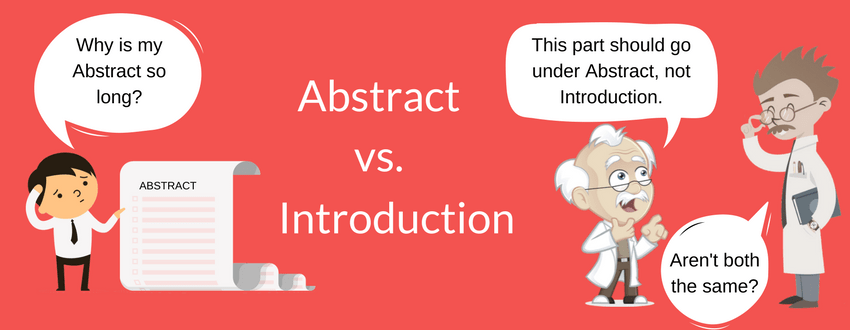How an Abstract Is Different from the Introduction of a Research Paper|2025
Learn how an abstract is different from the introduction of a research paper. Understand the distinct purposes, structures, and key elements of each to improve your academic writing.
Research papers play a pivotal role in academic and professional discourse by presenting information systematically and precisely. Two essential components of a research paper are the abstract and the introduction. Though they may appear similar at first glance, they serve distinct purposes and are structurally different. Understanding the differences between an abstract and an introduction can significantly enhance the effectiveness of a research paper.
What Comes First: Abstract or Introduction?
The abstract comes first in a research paper. It is typically placed immediately after the title page and before the introduction. The placement of the abstract allows readers to quickly grasp the essence of the paper without delving into the full text. On the other hand, the introduction is located at the beginning of the main body of the paper. Its role is to set the stage for the study, presenting background information, the research problem, and the objectives.
Definition and Purpose of an Abstract
An abstract is a concise summary of the entire research paper. It encapsulates the main objectives, methods, results, and conclusions in a succinct format, usually within 150–300 words. The primary purpose of an abstract is to provide readers with a quick overview of the research, enabling them to determine whether the paper is relevant to their interests or needs.
Example of Abstract
Abstract:
This study explores the effects of social media usage on academic performance among university students. A survey of 500 students was conducted, and the data were analyzed using regression models. The findings indicate a significant negative correlation between excessive social media use and academic achievement. These results underscore the importance of balancing online activities with academic responsibilities and suggest avenues for future research on digital behavior and its implications for education.
The example above highlights the key elements of an abstract: the research topic, methods, findings, and implications. It gives a complete yet concise snapshot of the study.
Definition and Purpose of an Introduction
The introduction, by contrast, serves as the opening of the main body of the research paper. Its purpose is to establish the context for the study, introduce the research problem, and explain the objectives or hypotheses. Unlike the abstract, which summarizes the entire paper, the introduction provides detailed background information and sets the stage for the rest of the paper.
Example of Introduction
Introduction:
Social media has become a ubiquitous part of modern life, influencing various aspects of daily activities. Among university students, social media platforms are not only used for communication and entertainment but also for academic purposes. However, the extent to which social media usage impacts academic performance remains a topic of debate. Previous studies have shown mixed results, with some suggesting that social media can enhance learning opportunities, while others indicate it may serve as a source of distraction. This paper seeks to investigate the relationship between social media usage and academic performance among university students, aiming to provide insights into how digital behaviors affect educational outcomes.
The introduction in this example offers detailed background information, presents the research problem, and outlines the study’s objectives. It invites readers into the subject matter and sets up the framework for the paper’s argument.
Key Differences Between Abstract and Introduction in a Research Paper
Purpose
- Abstract: Summarizes the entire paper, including objectives, methods, results, and conclusions. It aims to give readers a quick overview of the study.
- Introduction: Introduces the research topic, provides background information, states the research problem, and outlines the objectives or hypotheses. It sets the stage for the paper.
Content
- Abstract: Contains a condensed version of the entire paper, focusing on key elements.
- Introduction: Focuses on providing context, explaining the significance of the study, and outlining the research question.
Length
- Abstract: Brief and concise, typically 150–300 words.
- Introduction: More detailed and longer, usually spanning several paragraphs.
Structure
- Abstract: Follows a structured format that includes objectives, methods, results, and conclusions.
- Introduction: Organized in a narrative style, introducing the topic and gradually leading to the research problem.
Placement
- Abstract: Located before the main body of the paper.
- Introduction: Marks the beginning of the main body of the paper.
Is Abstract and Objective the Same Thing in a Research Paper?
While the abstract and the objective may overlap in content, they are not the same thing.
- The abstract is a summary of the entire research paper, encompassing the objectives, methods, results, and conclusions.
- The objective specifically refers to the goals or aims of the research. Objectives are often mentioned in both the abstract and the introduction but are presented in more detail in the introduction.
For example:
- Objective in Abstract: “This study aims to explore the relationship between social media usage and academic performance.”
- Objective in Introduction: “The objective of this research is to analyze the extent to which social media usage influences academic outcomes, with a focus on identifying patterns of behavior among university students.”
Abstract vs. Introduction in APA Format
In APA style, the abstract is placed on its own page, immediately following the title page. It is labeled with the heading “Abstract” (centered, bold, and written in title case). The content is written as a single paragraph without indentation.
The introduction, on the other hand, starts on a new page after the abstract. In APA format, the introduction does not have a specific heading but begins directly under the title of the paper. The introduction’s tone and style are more detailed and narrative compared to the succinct nature of the abstract.
Difference Between Abstract and Conclusion
Another point of distinction lies between the abstract and the conclusion of a research paper. While both summarize aspects of the study, they serve different functions:
Abstract:
- Summarizes the entire paper.
- Appears at the beginning of the paper.
- Highlights objectives, methods, results, and implications.
Conclusion:
- Summarizes the key findings and their implications.
- Appears at the end of the paper.
- Focuses on wrapping up the argument and discussing future directions or recommendations.
Example of Abstract vs. Conclusion:
- Abstract: This study explores the effects of social media usage on academic performance among university students. Results indicate a significant negative correlation between excessive social media use and academic achievement. These findings highlight the importance of balancing digital activities with educational responsibilities.
- Conclusion: In conclusion, this study demonstrates that excessive social media usage negatively impacts academic performance among university students. The results underscore the need for awareness campaigns promoting balanced digital habits. Future research could explore intervention strategies to mitigate these effects and enhance student success.
Practical Implications
Understanding the differences between an abstract and an introduction is crucial for effectively structuring a research paper. Here are some practical tips:
- Be Clear and Concise in the Abstract: Focus on summarizing the most critical elements of the paper without unnecessary detail.
- Provide Context in the Introduction: Use the introduction to engage readers and explain why the research is important.
- Follow Formatting Guidelines: Ensure that both the abstract and the introduction adhere to the required formatting style, such as APA, MLA, or Chicago.
- Avoid Redundancy: While the abstract and introduction may overlap in content, ensure they serve their distinct purposes without unnecessary repetition.
- Tailor Content to the Audience: The abstract should appeal to readers looking for a quick overview, while the introduction should cater to those interested in the detailed background and rationale for the study.
Conclusion
In summary, the abstract and introduction of a research paper differ in purpose, content, structure, and placement. The abstract provides a concise summary of the entire study, enabling readers to quickly assess its relevance. In contrast, the introduction delves into the background and significance of the research, setting the stage for the main body of the paper. While the abstract is typically shorter and more structured, the introduction is longer and more detailed. By understanding these distinctions, researchers can craft effective abstracts and introductions, enhancing the clarity and impact of their work.
Needs help with similar assignment?
We are available 24x7 to deliver the best services and assignment ready within 3-4 hours? Order a custom-written, plagiarism-free paper



